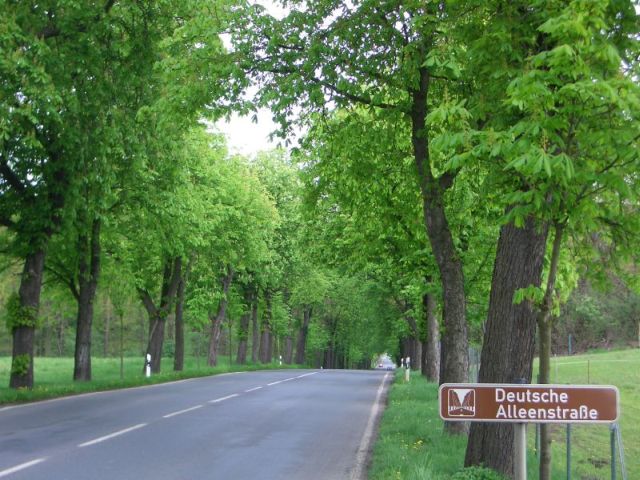Avenues as ecological niches
Rows of trees along roads and lanes crisscross the cultural landscapes of Europe like green veins. In intensively farmed areas, in particular, avenues link together valuable natural habitats and serve as nesting and resting places and sources of food for many animals.
Climate protection
Especially on busy roads and in densely populated regions, tree-lined avenues play a highly useful role, filtering dust and exhaust gases from the air and pollutants from the groundwater. They also provide climate protection as converters of carbon dioxide. A single 100-year beech tree, for example, can produce 45,000 litres of oxygen through photosynthesis on a sunny day. This gives enough air to breathe to 10 people for a year.
Fine dust particle filters
Airborne particles are particularly harmful to health because they attach to air pollutants. If they enter the human body, they can induce bronchitis, asthma, lung cancer or cardiovascular damage. Tree-lined streets can filter out up to 70% of the particulate matter in the air. Dust particles whirled up by winds are deposited on the leaves and washed off by rain. A single tree can filter up to a tonne of dust out of the air in this way alone over a year.
Irreplaceable habitat
Avenues link isolated natural areas in our agrarian landscapes, ensuring that plants and animals continue to find sufficient habitats. The rows of trees along the roads allow small mammals, insects and birds to spread out in an otherwise mostly monotonous cultivated landscape. Raptors such as common buzzards or hawks can perch in treetops lining the road and watch for prey. Songbirds like the chaffinch, the woodpecker and the wood pigeon can also nest and rest in the trees.
Green veins
Tree-lined avenues even make up their own little “biotope”. Shady coolness even on days with plenty of sunshine, the moisture-retaining effect of the leafy canopy and diminished wind speeds in the tunnel formed by the trees provide for very specific living conditions and a special microclimate. Certain species of spiders, beetles, bees and other insects find a suitable habitat in tree-lined avenues.
Although it may seem so from afar, avenues do not necessarily resemble one another. Pine, linden or fruit trees all have their own function in the ecosystem of an avenue. Up to 500 insect species have been counted on a single birch, and up to 60 species of birds feed on the fruits of mountain ash.
Avenues as a tourist attraction
Tree-lined avenues allow travellers to enjoy the diversity of the natural world in every season, best of all on bike or on foot. In the spring, holidaymakers feel nature reawaken as they travel down the fresh green avenues. In summer, the leafy canopy shades them, gives them a feeling of security, and the play of light orchestrated by the leaves and the rays of the sun creates a relaxing atmosphere. Autumn offers an exuberant play of colours, which is just as impressive as the Indian Summer in North America. Such avenues take on a rather bizarre winter charm. In all seasons, however, they provide travellers a feeling of continuity and guide them to their destinations.
In Germany, the diverse splendours of avenues led to the “German Avenues Route” initiative. Its nearly 3,000 kilometres make it Germany’s longest holiday route, leading through ten federal states and some of the most beautiful holiday destinations in Germany: starting on the island of Rügen, it runs along the Mecklenburg Lake District though the Harz Mountains and the Thuringian Forest, passing by Vogelsberg Mountains and into the Rhine valley. From there, it continues on through the Palatinate and Black Forests, passes over the Swabian Alps, and ends in the Lake Constance region.

